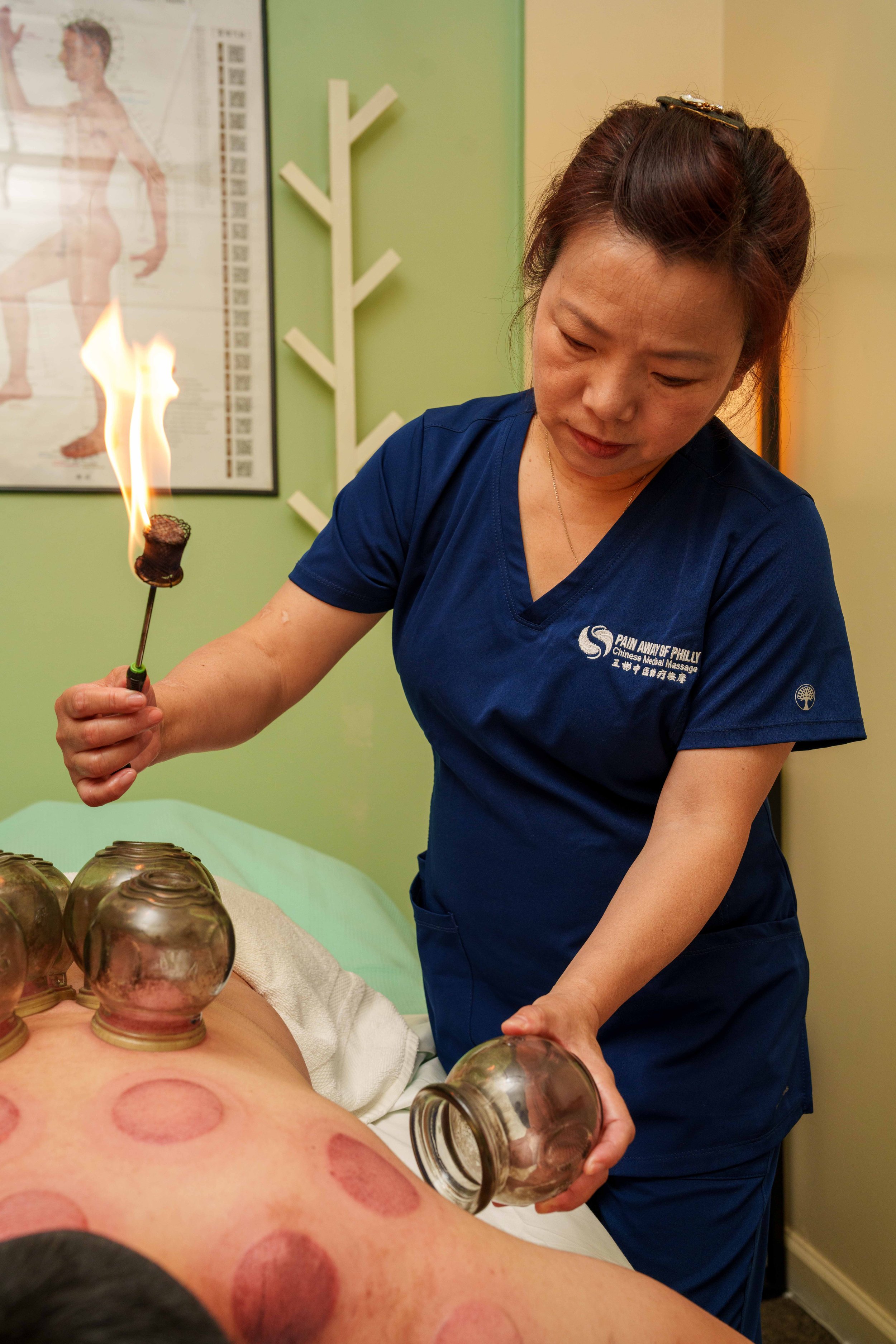Fire Cupping Therapy*
Fire cupping therapy is a form of traditional Chinese medicine (TCM) that involves creating a vacuum inside glass or bamboo cups to create suction on the skin's surface. The process typically begins with a cotton ball or swab soaked in alcohol being set on fire and briefly inserted into the cup, which is then quickly placed on the skin. As the air inside the cup cools and contracts, it creates a vacuum, pulling the skin upward into the cup. This therapy is known for its ability to address a range of physical discomforts and wellness concerns.
What Is It Good For?
Muscular pain and tension
Chronic pain conditions
Inflammation and swelling
Stress and anxiety
Respiratory issues such as asthma and congestion
Detoxification and overall well-being
Skin-related concerns like cellulite and scar reduction
Moving Cupping*
Moving cupping therapy is a variation of cupping therapy that involves the application of suction cups to the skin and then moving them across specific areas of the body. Unlike stationary cupping, where cups are left in place, moving cupping utilizes the gliding or sliding motion of cups to create a massage-like effect.
What Is It Good For?
Muscle Tension Relief
Pain Management
Improved Blood Circulation
Detoxification
Relaxation and Stress Reduction
Muscular pain and tension
Stress and anxiety
Chronic pain conditions
Wet Cupping*
Wet cupping therapy, also known as "hijama" in Arabic, is a traditional therapeutic practice that involves the use of suction cups to draw a small amount of blood from specific acupuncture points on the skin. This form of cupping therapy is distinct from dry cupping, which doesn't involve bloodletting.
What Is It Good For?
Detoxification
Pain Relief
Inflammation Reduction
Energy Balance
After Care
Keep Covered: Keep the cupped areas covered and warm immediately after the session. This helps to protect the treated skin from exposure to cold air or drafts, which can sometimes cause discomfort.
Avoid Cold Water: Avoid exposing the cupped areas to cold water, such as in a cold shower or bath, for at least 6 hours after the treatment. Warm water is preferable for bathing during this time.
Stay Hydrated: Drink plenty of water to stay hydrated after cupping therapy. Hydration helps flush out toxins that may have been released during the treatment.
No Intense Exercise: Refrain from engaging in strenuous physical activities, heavy lifting, or vigorous exercise for at least 12 hours following cupping therapy. This allows your body to recover and reduces the risk of muscle strain or bruising.
Gentle Care: Be gentle when drying off or patting the cupped areas with a towel. Avoid rubbing or scrubbing the skin vigorously.
Moisturize: After the initial 24 hours, you can apply a gentle, hypoallergenic moisturizer to the cupped areas to keep the skin hydrated and prevent excessive dryness.
*Disclaimer: Please be aware that fire cupping therapy may leave temporary marks on the skin, which can range from red or pink circles to more pronounced discolouration. These marks are not bruises but are a result of increased blood flow and the release of stagnant energy. Occasionally, blisters may develop, although this is relatively rare. Such reactions are considered normal responses to the therapy and typically subside within a few days to a week. The intensity of marks and any potential blisters can vary depending on individual factors. If you have any concerns or questions about your cupping experience, please discuss them with your practitioner.



